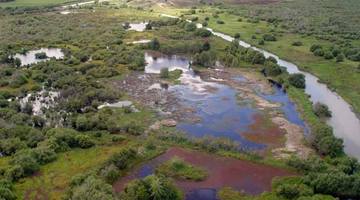Researcher Cheri van Schravendijk-Goodman explains why wetlands are important for the health and wellbeing of the Waikato River. She likens wetlands to the function of kidneys in the body – a place to filter out pollutants. Part of Cheri’s research involves improving the state of wetlands for the sake of the river and general environment.
Transcript
CHERI VAN SCHRAVENDIJK-GOODMAN
Wetlands are important to the state and health and wellbeing of the Waikato River because they’re like the kidneys.
If you think about the human body, the kidneys are the last area where the water in our body gets filtered out before we excrete it out. And it’s a similar kind of thing with wetlands – they’re the last port of call for filtering out the pollutants and stuff that come off the wider catchment. And the really cool thing about wetlands is they’re this environment that exists between a water body like Waikato River or like our lakes and the land that sits beside it, so they’re the thing that connects those two systems together really, really effectively.
Wetlands have unfortunately been one of the first ecosystems that tends to suffer when we do any kind of land intensification. We’re likely to point the finger at the farmers, but lots of the infrastructure that we develop for cities and towns actually has an impact on those things too, things like expressways. Even housing development, you know when we’re talking about Auckland possibly growing out towards Pōkeno and into the Hamilton area, that whole area was a huge big wetland.
Nationally, the figures are around about 10% of the wetlands still remain in New Zealand. In the Waikato, we have about 20–25% remaining, but they are in really, really bad state of decline and degradation. So our goal is to try and improve them for the health and wellbeing, not only for the river, but also all the animals and plants and insects that live in those as well.
Acknowledgements
Cheri van Schravendijk-Goodman
Dr Beverley Clarkson, Landcare Research
Josh Ormsby; Jonathan Brown; Scott Bartlam; Kerry Bodmin
The Waikato Tainui College for Research and Development acknowledges the financial support given by the Waikato River Cleanup Trust Fund which is administered by the Waikato River Authority.
The Waikato River Cleanup Trust does not necessarily endorse or support the content of the publication in any way.


